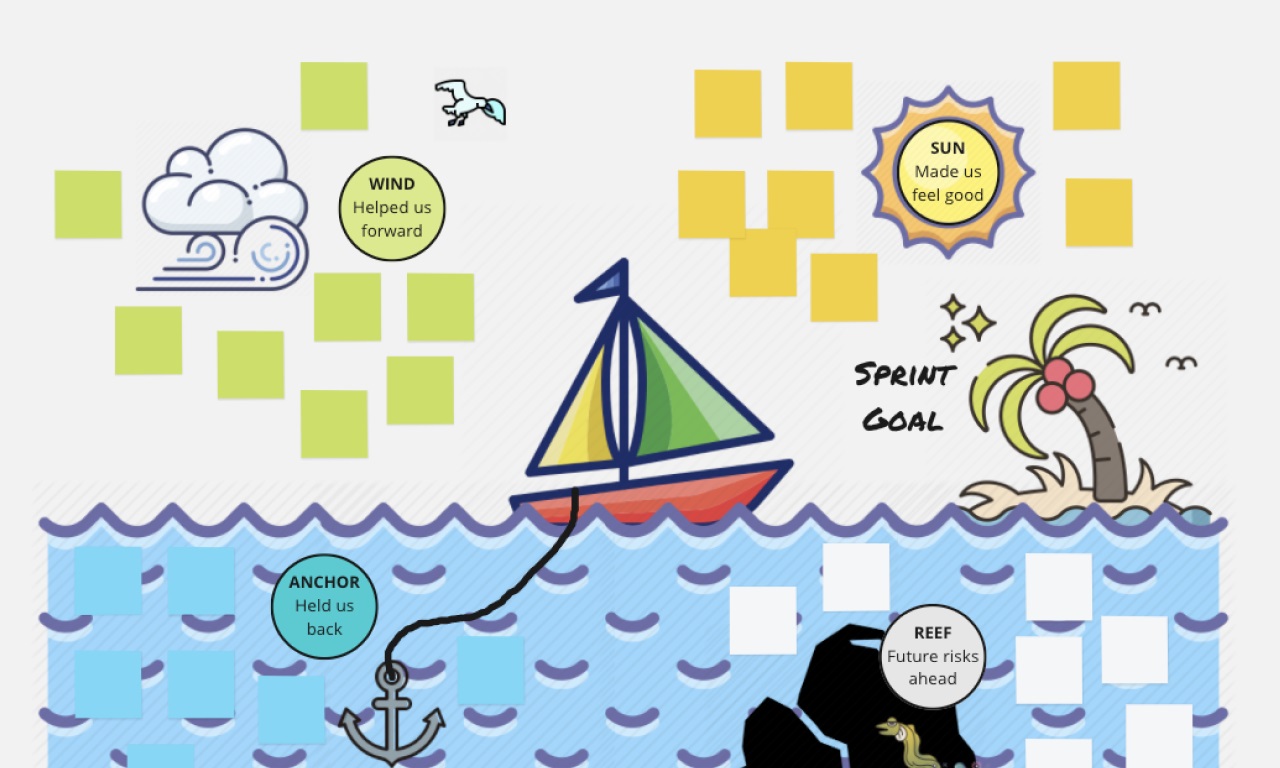In the previous article, we discussed the importance of the Retrospective. We covered reasons why it’s useful and how it’s often the most important part of the sprint.
Briefly, we mentioned there were many types of retrospective formats that expand upon the foundation of Start > Stop > Continue that teams of varying maturity facing different problems can use.
In this article, we’ll look at five different retro formats, including when and how to use them.
1. Happy, Confused, Sad
You can guess from the way this retro is structured, that it’s used when there is an emotional or morale situation with the team that requires resolving. It is meant to help the team build an emotionally aware dynamic in order to become more positive and also learn to view issues from a different perspective.
When teams work together for a long time, inevitably miscommunications happen. Especially in situations where silos occur when work gets busy, people develop a level of myopia regarding their work. Coupled with the stress of delivery, we tend to view the quality and competence of others through a warped perspective. When left ignored, it can grow and will threaten the integrity of the team.
The Happy, Confused, Sad retro (or in some cases, the mad, sad, glad retro) helps the team to define what makes them happy, what potentially confuses or makes them mad and what makes them sad or frustrated.
It is very important when conducting an emotional retro like this to focus on events, behaviours and processes instead of calling out individuals and assigning blame.
It is not recommended for team managers to attempt this retro unless they’re trained to do so.
2. Sailboat retro
The sailboat retro is useful for teams who are preparing to deliver a product. It is essentially a visualisation tool to gauge the health of the team and the progress of what they’re working on.
The sailboat retro is organised around four pillars: Rocks (risks), Anchors (issues/bottlenecks that are weighing the team down), Wind (things that are helping the team) and Land (the goal).
By providing a clear visual of what the team is currently doing and the issues facing them, it allows those involved to clearly and quickly identify steps that need to be taken in order to meet their goal, represented by Land.
This format is also fairly colourful if the team uses graphics and post-its which helps to break up the monotony and sometimes, seriousness of the matter.
3. Timeline retro
The timeline retro, compared to the other retros is a bit of an odd duck. It’s unique in that it is used mostly by a mature team. It is also one that requires a lot of introspection and preparation before it can happen, otherwise the retro won’t be successful.
True to its name, the timeline retro requires the team members to think back about the previous sprints and recall what went well, didn’t go well and what could have gone better in order to chart the team’s progress from the first sprint to the current one.
It is useful for mature teams that have gone through at least three sprints together (anything from 1.5 to 3-months) to have a clear understanding of all they’ve achieved and areas that may still require work.
Naturally, a timeline retrospective can be a daunting thing to organise as it requires team members to remember or at the very least, keep a diary of events on a sprint basis.
4. 4Ls: Liked, longed, lacked, learned
The 4Ls is a brainstorming retro focused around collecting feedback around a recently completed project. The retro is structured around the positive (liked, longed) and negative (lacked, learned). Despite it sounding like an emotional retro, it is not meant to be one.
The approach is from a factual perspective, centered around learning and improving for the future.
5. Rose, Bud, Thorn
Not wholly different from the conventional retro questions, the Rose, Bud, Thorn retrospective nevertheless is a great tool for less mature teams or even as a retrospective for students. It’s an active listening technique to help categorize and share insights.
The Rose is about positive outcomes and successes. The Bud is about areas of potential and opportunities while the Thorn covers challenges and painful issues.
This format is popular because it is simple and very easily understood, especially for teams who aren’t running the agile way or are in the early transformation process.
It can be applied to school projects, for example, when the teacher wants the students to learn from what they’ve done. Conversely, it can be applied to any department in an organisation who could benefit from a simple, yet structured way to evaluate the success of a campaign, completed project or even business objective.
The decision to use one type of retro format over another is not a simple thing to suggest. Depending on what the team requires, a specific type of retro format may be more applicable than others. A good approach is if there is no specific problem, then use whichever format you and the team feel inclined toward.
But if there is a specific problem, it is likely there is an appropriate retro format to help the team structure their thoughts.
The question then, is how do you know which format is applicable to you?






